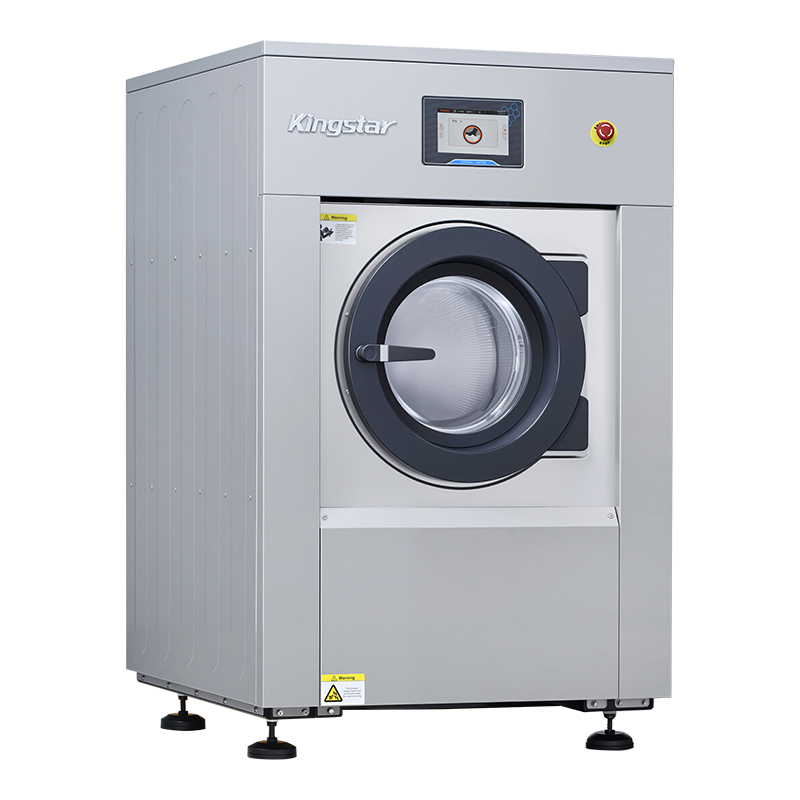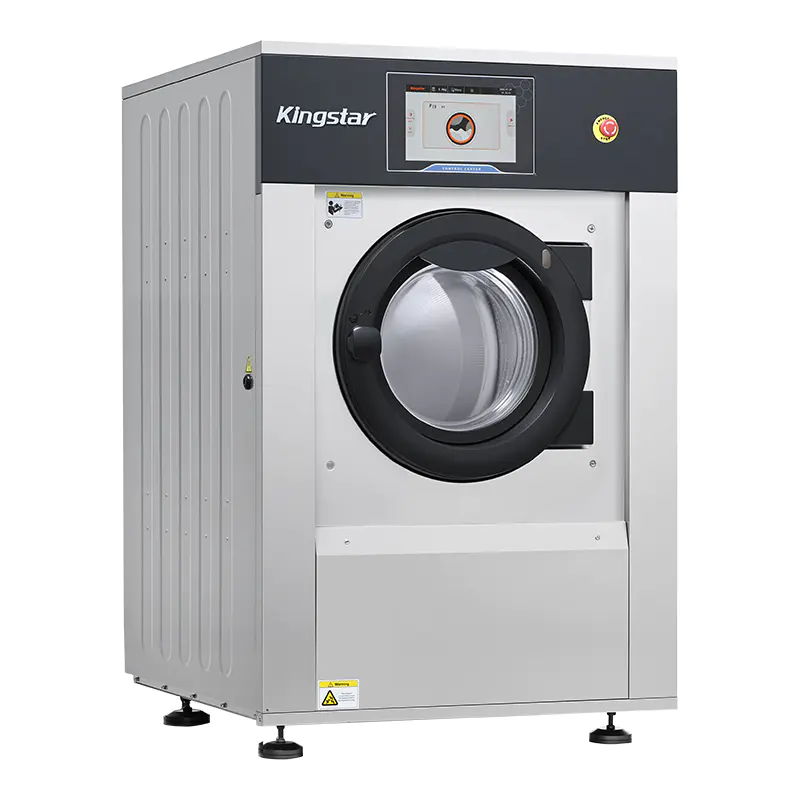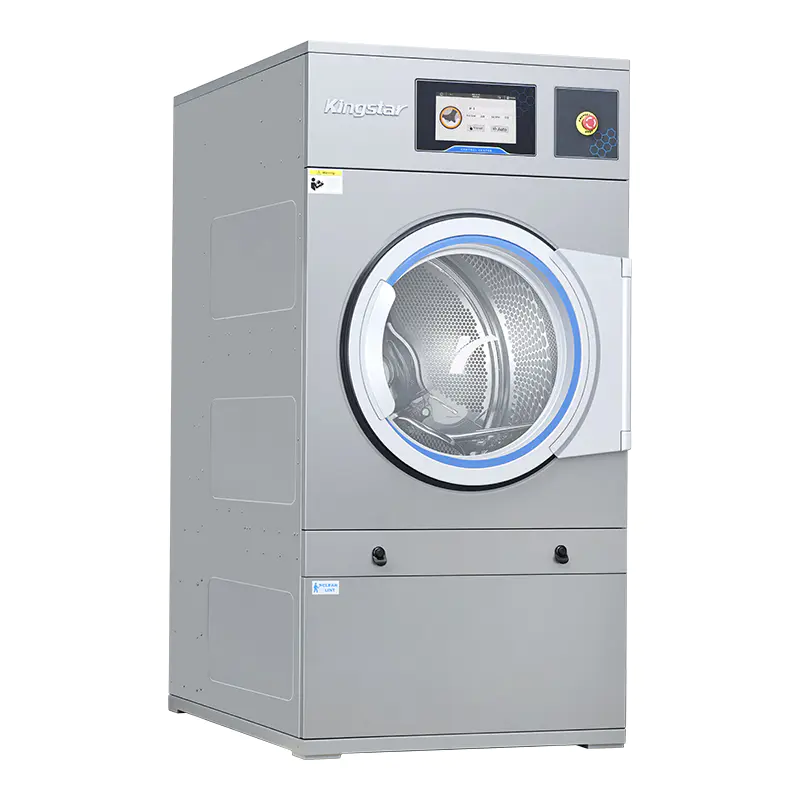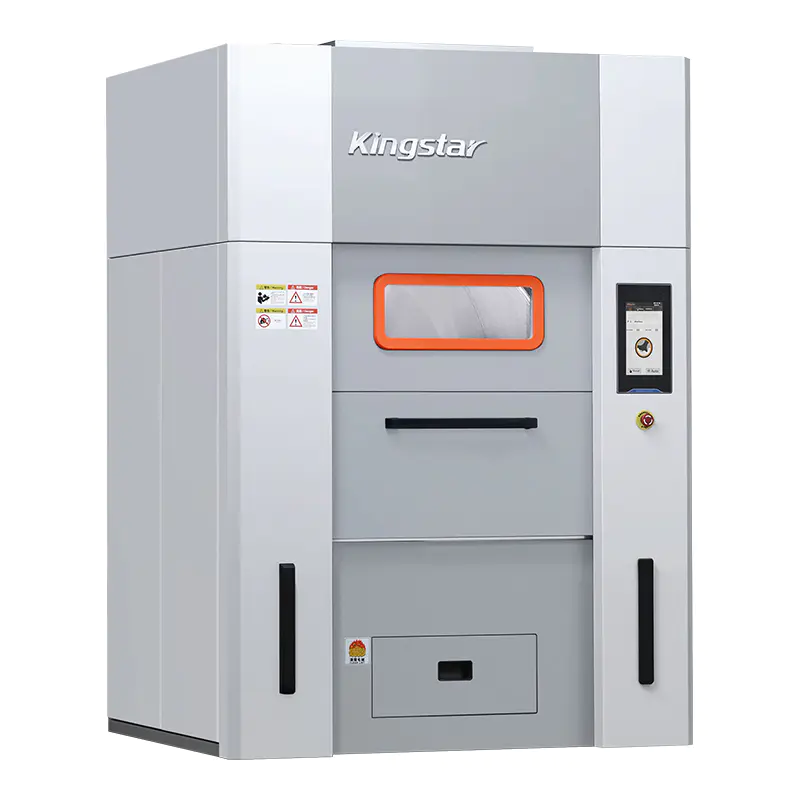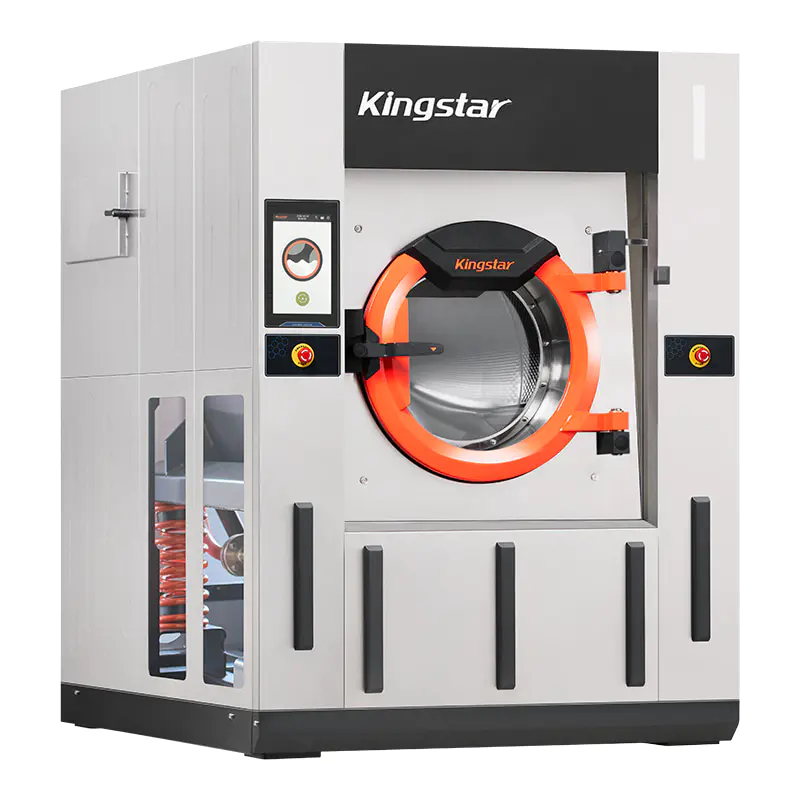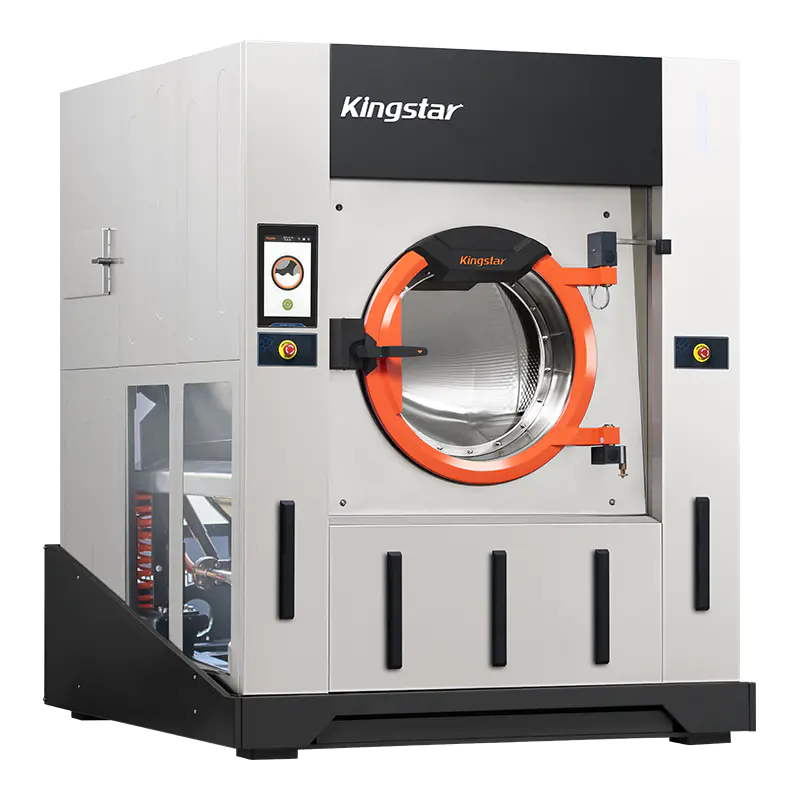
What are the washing efficiency and energy-saving performance of commercial washing machines?
Overview of washing efficiency of commercial washing machines
The washing efficiency of commercial washing machines is one of the important indicators to measure its performance, which is directly related to the cleanliness of clothes and customer satisfaction. Washing efficiency depends not only on the mechanical structure design of the machine, but also closely related to the washing program, speed, washing time and water flow dynamics. Compared with household washing machines, commercial washing machines usually have stronger power systems and more flexible program settings, which can cope with the washing needs of large quantities of clothes and various materials. This design enables commercial washing machines to maintain a relatively stable cleaning effect and efficient working rhythm when handling large-scale washing tasks.
Factors Affecting Washing Efficiency
| Model | Washing Time (min) | Cleaning Rate (%) | Water Consumption (L) | Energy Consumption (kWh) |
|---|---|---|---|---|
| Model A | 30 | 85 | 50 | 1.2 |
| Model B | 25 | 82 | 45 | 1.1 |
| Model C | 35 | 88 | 55 | 1.3 |
Key factors affecting washing efficiency
Washing efficiency is affected by many factors. The first is the selection and dosage of detergents. Suitable detergents can improve the cleaning effect while avoiding fiber damage. Secondly, the control of water temperature has a direct effect on removing oil stains and stains. High-temperature washing helps to decompose dirt, but some materials require low-temperature protection. The design of washing programs, such as washing time, stirring method and speed adjustment, is also the key to ensuring the cleaning effect. In terms of mechanical structure, drum design and water flow distribution can affect the uniformity of washing. Reasonable mechanical movement methods can help reduce clothing entanglement and damage, thereby improving overall efficiency.
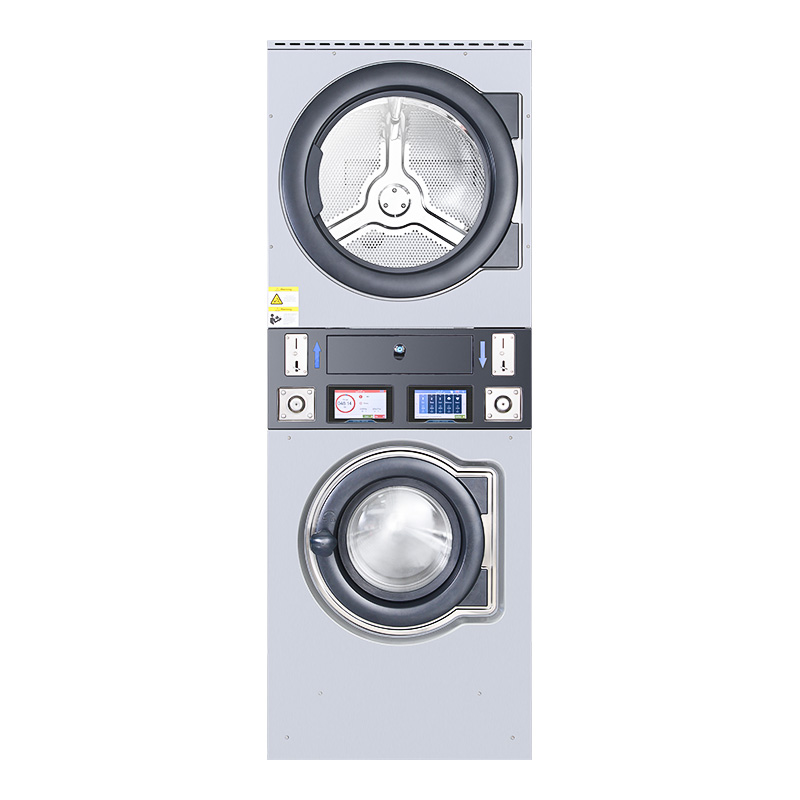
Energy-saving performance of commercial washing machines
With the improvement of energy-saving and environmental protection awareness, the energy-saving performance of commercial washing machines has become an important aspect of user concern. Modern commercial washing machines have achieved effective control of energy consumption by adopting variable frequency drive technology, intelligent control system and efficient water circulation system. Frequency conversion technology can automatically adjust the motor speed according to the load to avoid invalid power consumption; the intelligent system reasonably allocates water and electricity resources and reduces waste through data monitoring and program optimization. At the same time, the optimized water circulation system reduces water consumption, and with efficient filtration and sewage treatment, it not only saves water resources but also reduces operating costs.
Performance Comparison of Different Commercial Washing Machine Types
| Machine Type | Washing Efficiency (%) | Energy Consumption (kWh) | Average Cycle Time (min) |
|---|---|---|---|
| Front-load | 85 | 1.2 | 30 |
| Top-load | 78 | 1.5 | 40 |
| Tunnel Washer | 90 | 1.8 | 20 |
Balance between washing efficiency and energy-saving performance
In the design and operation process, commercial washing machines need to seek a reasonable balance between washing efficiency and energy-saving performance. Efficient washing programs often require longer running time and greater water and electricity consumption, while excessive pursuit of energy saving may lead to a decrease in washing effect. Manufacturers have developed a variety of washing modes to meet the combination of different cleaning needs and energy consumption control, such as fast washing mode, energy-saving washing mode, etc. Users can choose the appropriate program according to the type of clothing and the degree of cleanliness, which not only ensures the cleanliness of clothing, but also achieves energy-saving purposes.
Application of energy-saving technology in commercial washing machines
In recent years, commercial washing machines have widely used a variety of energy-saving technologies. Heat recovery technology recycles waste heat from wastewater to preheat incoming water, reducing heating energy consumption; automatic load detection technology adjusts water volume and operating time according to the amount of clothes to avoid resource waste; high-efficiency motors and inverters improve driving efficiency and reduce energy loss. In addition, intelligent control systems use Internet of Things technology to achieve remote monitoring and management, further optimizing operating efficiency and energy-saving performance.
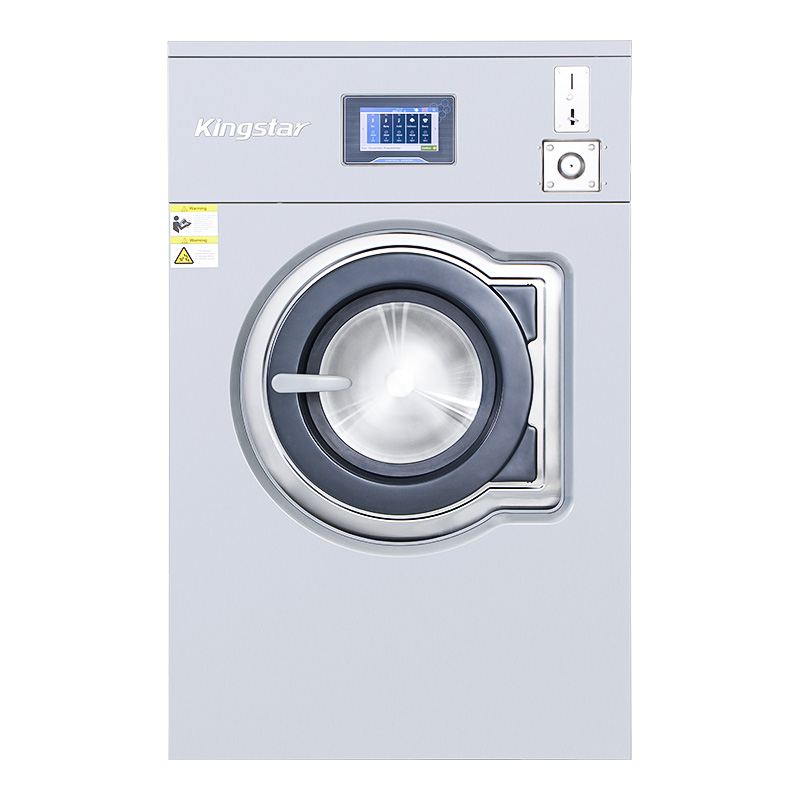
Testing methods for washing efficiency and energy-saving performance
In order to ensure the performance of commercial washing machines, their washing efficiency and energy-saving performance must be scientifically tested. Washing efficiency is usually evaluated by measuring stain removal rate, residual substances and clothing damage using standardized test methods. Energy-saving performance is quantified by monitoring indicators such as energy consumption, water consumption and operating efficiency per unit time. Some regions and industries also have corresponding energy-saving certification standards, and commercial washing machines must meet these specifications to ensure their market competitiveness and user recognition.
External factors affecting washing efficiency and energy-saving performance
In addition to the performance of the equipment itself, washing efficiency and energy-saving performance are also affected by the external environment and operating conditions. For example, the hardness and pollution level of water will affect the effect of detergents and the operating status of the equipment; the training and usage habits of operators also determine the actual performance of the equipment. Reasonable maintenance and regular inspections can maintain the operating efficiency of the equipment and avoid increased energy consumption and decreased washing effect due to mechanical wear or failure.
Improvement direction of washing efficiency and energy-saving performance of commercial washing machines
The future development trend of commercial washing machines is to pay more attention to intelligence and green energy saving. Through big data and artificial intelligence technology, equipment self-optimization and predictive maintenance will be achieved, which will further improve washing efficiency and reduce energy consumption. In terms of materials, the use of lightweight and corrosion-resistant materials can extend the life of the equipment and reduce maintenance costs. Innovations in detergents and cleaning technologies also provide new possibilities for improving overall performance. Manufacturers and users jointly pay attention to environmental protection and economic benefits, which will promote the continuous advancement of commercial washing machine technology.
Table of washing efficiency and energy-saving performance
| Indicator | Details | Explanation |
|---|---|---|
| Detergent Usage | Use detergent in appropriate amounts | Avoid waste and protect fabric |
| Water Temperature Control | Adjust water temperature based on fabric | High temperature for stain removal, low for fabric protection |
| Mechanical Design | Drum shape, agitation method, speed adjustment | Affects washing uniformity and efficiency |
| Variable Frequency Drive | Automatically adjusts motor speed based on load | Reduces ineffective energy consumption |
| Intelligent Control System | Data monitoring and program optimization | Achieves dynamic balance of energy saving and efficiency |
| Heat Recovery Technology | Uses waste water heat to preheat incoming water | Lowers heating energy consumption |
| Automatic Load Detection | Adjusts water volume and cycle time based on laundry load | Prevents resource waste |
| Energy-saving Certification | Complies with relevant energy-saving standards | Enhances market competitiveness |
ADD:No.388 Xinggang Road, Chongchuan District, Nantong City, 226000, Jiangsu Province, China.
-
Phone: +86-13917089379
-
Tel:+86-13917089379
-
Fax:+86-0513-85663366
-
E-mail:[email protected]
